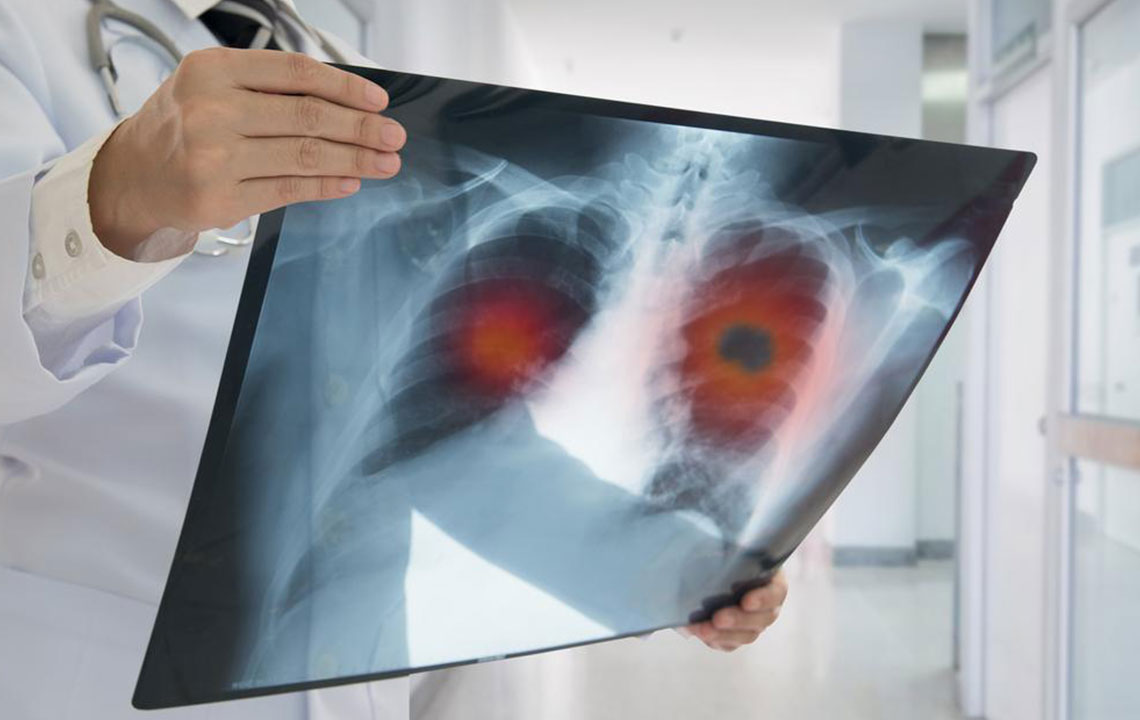A Comprehensive Guide to Non-Small Cell Lung Cancer: Causes, Symptoms, Diagnosis, and Modern Treatment Strategies
This comprehensive article explores non-small cell lung cancer (NSCLC), highlighting its causes, symptoms, diagnostic methods, and the latest advancements in treatment options. With a focus on personalized medicine and emerging therapies like targeted drugs and immunotherapy, it offers valuable insights into how NSCLC is managed today and future possibilities. Early detection and tailored treatment plans significantly improve patient outcomes, making this guide essential for those interested in understanding lung cancer better and staying informed on current medical breakthroughs.

Understanding Non-Small Cell Lung Cancer: Causes, Symptoms, Diagnosis, and Modern Treatment Strategies
Lung cancer remains one of the leading causes of cancer-related deaths worldwide, posing a significant public health challenge across all continents. It affects both men and women, and its high mortality rate underscores the importance of understanding its underlying causes, early detection methods, and the latest treatment options. Among the different types of lung cancer, non-small cell lung cancer (NSCLC) constitutes approximately 85% of all lung cancer cases, making it the most prevalent form globally. Effective management of NSCLC requires a comprehensive understanding of its pathogenesis, risk factors, clinical manifestations, diagnostic procedures, and evolving therapeutic approaches.
This detailed guide aims to shed light on non-small cell lung cancer, discussing the primary causes, common symptoms, diagnostic tools, and the innovative treatment modalities that are improving patient outcomes. With advancements in medical science, personalized medicine, targeted therapies, and immunotherapy are transforming the landscape of lung cancer management, offering new hope to patients diagnosed with this formidable disease.
What Causes Non-Small Cell Lung Cancer?
Understanding the causes of NSCLC is crucial for both prevention and early diagnosis. The primary risk factor is tobacco smoking, which accounts for up to 90% of lung cancer cases. The carcinogens present in tobacco smoke directly damage the DNA of lung cells, triggering genetic mutations that lead to malignant transformation. This cumulative damage over years of smoking significantly increases the likelihood of developing NSCLC.
However, smoking is not the only risk factor. Environmental exposures also play a pivotal role, especially for non-smokers or former smokers. Prolonged inhalation of carcinogenic substances such as radon gas, asbestos fibers, and exposure to air pollution—particularly fine particulate matter (PM2.5)—are linked to increased risk. Additionally, exposure to industrial chemicals like nickel, cadmium, arsenic, and diesel exhaust fumes can contribute to lung cell mutations.
Genetics also influence susceptibility. First-degree relatives of lung cancer patients may carry inherited genetic mutations that predispose them to cancer. Moreover, certain genetic alterations in lung cells, such as mutations in the EGFR gene, ALK rearrangements, and ROS1 gene fusions, can drive cancer growth and influence treatment options.
Recognizing the Symptoms of NSCLC
Early stages of non-small cell lung cancer are often asymptomatic, which makes early detection challenging. As the tumor progresses, however, various symptoms emerge that often prompt medical attention. Common clinical manifestations include a persistent cough that doesn't respond to typical therapies, chest pain, shortness of breath, wheezing, and coughing up blood (hemoptysis). Patients may also experience unexplained weight loss, fatigue, recurrent respiratory infections like pneumonia or bronchitis, and hoarseness if the tumor involves the vocal cords.
Recognizing these symptoms early and seeking prompt medical evaluation is essential for improving prognosis. For high-risk individuals, routine screening through low-dose computed tomography (LDCT) scans has been demonstrated to significantly enhance early detection and survival rates.
Diagnostic Approaches for NSCLC
Once symptoms emerge or suspicion arises, a comprehensive diagnostic process begins. Imaging studies are fundamental, with chest X-rays frequently serving as initial tools. More detailed imaging, such as computed tomography (CT) scans, provide precise visualization of tumor size, location, and potential metastasis.
In cases where abnormal findings are detected, tissue biopsies are performed to confirm malignancy and determine histological subtype. Techniques include bronchoscopy with biopsy, needle biopsies guided by CT imaging, or surgical biopsies. Molecular testing of tumor samples is increasingly important, as it guides targeted therapy selection by identifying specific genetic mutations like EGFR, ALK, and ROS1 alterations.
Further staging typically involves positron emission tomography (PET) scans and magnetic resonance imaging (MRI) to assess the extent of disease spread. This comprehensive staging informs treatment decisions and helps predict patient prognosis.
Modern Treatment Modalities for NSCLC
Advances in medical research have revolutionized NSCLC management, shifting from traditional chemotherapy and radiation to more personalized, targeted approaches. The choice of treatment depends on the cancer’s stage, molecular profile, the patient’s overall health, and preferences.
Surgical Interventions: Early-stage NSCLC (Stage I and II) often benefits from surgical resection. Procedures like lobectomy, where an entire lobe of the lung is removed, are standard. Minimally invasive techniques, such as video-assisted thoracoscopic surgery (VATS), are increasingly employed to reduce recovery time and surgical complications.
Radiation Therapy: For patients ineligible for surgery or with advanced disease, radiation therapy offers local control. Stereotactic body radiation therapy (SBRT) delivers high-dose radiation precisely to the tumor, minimizing damage to surrounding tissues.
Chemotherapy: Traditional systemic chemotherapy remains a cornerstone for advanced stages, especially when surgical options are limited or as adjuvant therapy. It involves cytotoxic drugs that target rapidly dividing cells, but often with noticeable side effects.
Targeted Therapy: The advent of molecular profiling has enabled the use of targeted drugs that specifically inhibit pathways driving tumor growth. Epidermal growth factor receptor (EGFR) inhibitors, ALK inhibitors, and ROS1 inhibitors have shown remarkable efficacy in patients with corresponding genetic mutations, improving survival rates and quality of life.
Immunotherapy: The emergence of immune checkpoint inhibitors, such as PD-1 and PD-L1 inhibitors, has transformed NSCLC treatment. These drugs enable the immune system to recognize and attack cancer cells more effectively. They are particularly effective in patients with high PD-L1 expression, offering durable responses and prolonged survival.
Emerging therapies like combination regimens of immunotherapy and targeted agents are under active research, promising further improvements in management and patient outcomes.
Future Directions and Hope for Patients
Research continues to uncover new molecular targets and develop innovative therapies. Liquid biopsies allow for real-time monitoring of tumor genetic changes, enabling adaptive treatment strategies. Advances in nanotechnology and drug delivery systems aim to increase the precision and effectiveness of cancer treatments while reducing side effects.
Furthermore, the integration of artificial intelligence (AI) in diagnostics and treatment planning promises more personalized care, leading to better outcomes and a higher quality of life for patients.
Overall, understanding the causes, recognizing early symptoms, and adopting cutting-edge treatment strategies are key elements in the fight against non-small cell lung cancer. With ongoing improvements in medical science, the prognosis for NSCLC patients continues to improve, offering hope for longer, healthier lives.





